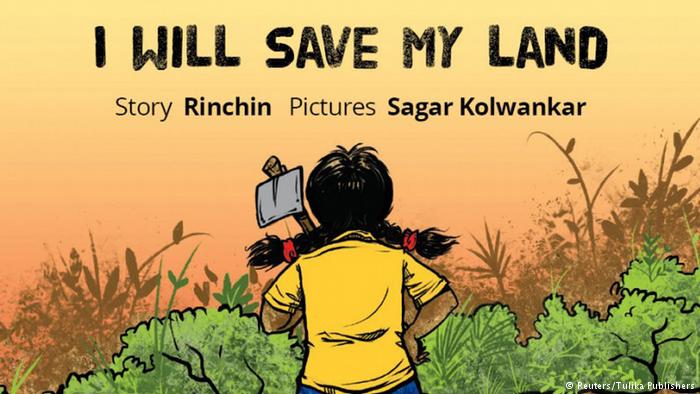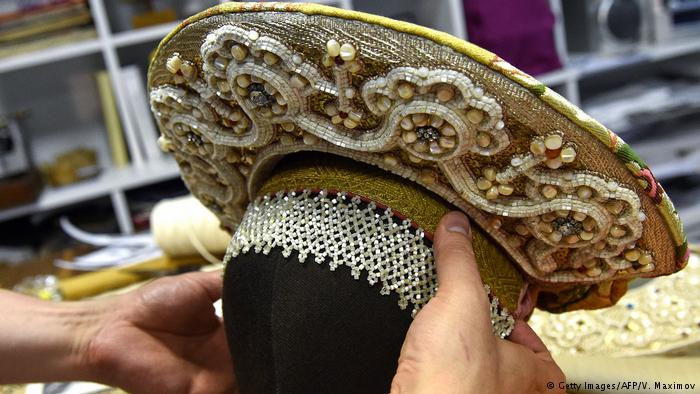Riot Days: Pussy Riot’s acts of defiance
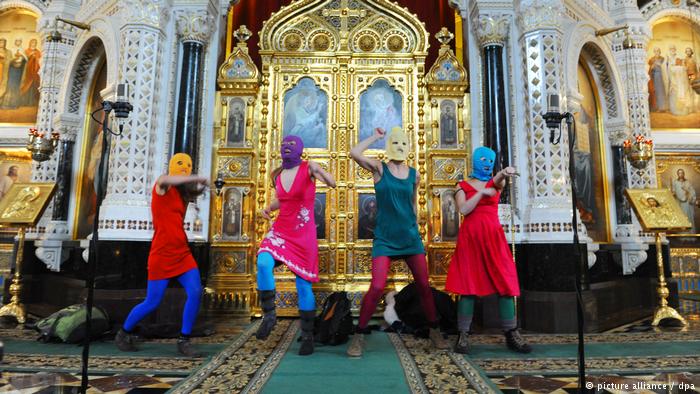
Members of the feminist punk group have been sentenced to 15 days in prison after a pitch invasion during the World Cup final in Russia. We look at some of their most high-profile protests to date.
All-girl Russian punk protest band Pussy Riot created an international storm in 2012 with a guerrilla performance in Moscow’s main cathedral (see above) that called for the Virgin Mary to protect Russia against Vladimir Putin, who was elected to a new term as Russia’s president a few days later. The protest attracted worldwide attention, and three members of the group were arrested.
–
State censorship
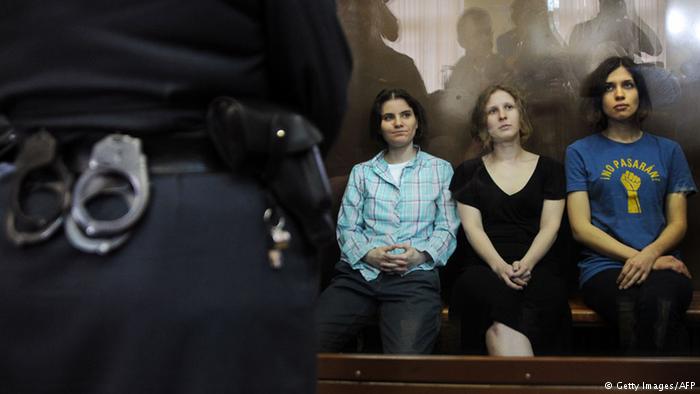
During the ensuing court hearing in Moscow in August 2012, Pussy Riot members Nadya Tolokonnikova (right), Maria Alyokhina (center) and Yekaterina Samutsevich (left) could be seen in a glass-walled cage. Support for the Pussy Riot activists came from all over the world.
–
Cause celebre
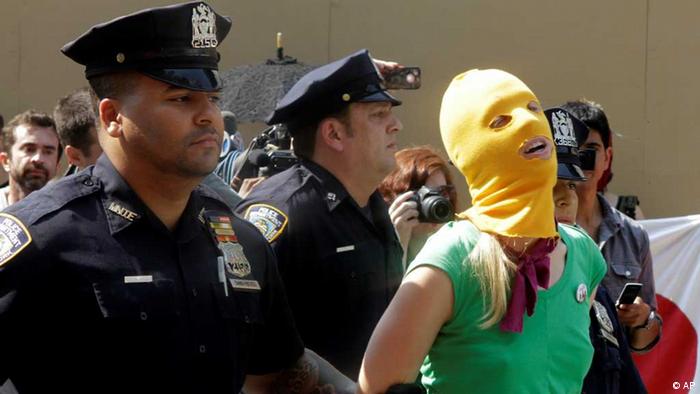
Pussy Riot’s iconic colorful balaclava face masks allowed supporters near and far to become “members of the band.” Here, a protester is arrested during a demonstration in support of Pussy Riot in 2012 in front of the Russian consulate in New York on the day a Russian judge found three members of the provocative punk band guilty of hooliganism.
–
No way out

Pussy Riot band member Nadya Tolokonnikova looks out from a holding cell during a court hearing in April 2013. Tolokonnikova was appealing her conviction for “hooliganism motivated by religious hate,” for which she was serving two years in a remote prison. Many international stars such as Madonna called for the Pussy Riot members’ release.
–
Back under attack
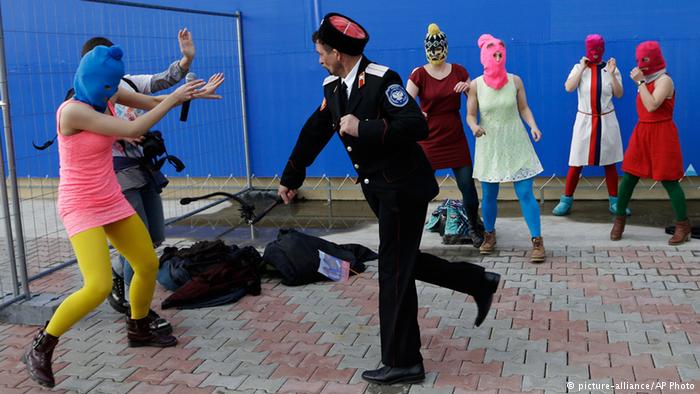
After their release from prison under an amnesty in late 2013, Pussy Riot were soon protesting again, this time at the Winter Olympics in the Russian city of Sochi. While they were preparing to sing the song “Putin Will Teach You to Love Your Motherland,” a spoof on state nationalism, a Cossack militiaman who was armed with a whip attacked band member Nadya Tolokonnikova and a photographer.
–
Fight the power

Masked Pussy Rot members leave a police station in Adler during the 2014 Sochi Winter Olympics in February 2014. Two members of the band, Maria Alyokhina and Nadezhda Tolokonnikova, were detained after they were wrongfully suspected of stealing a handbag from their hotel.
–
Getting the word out
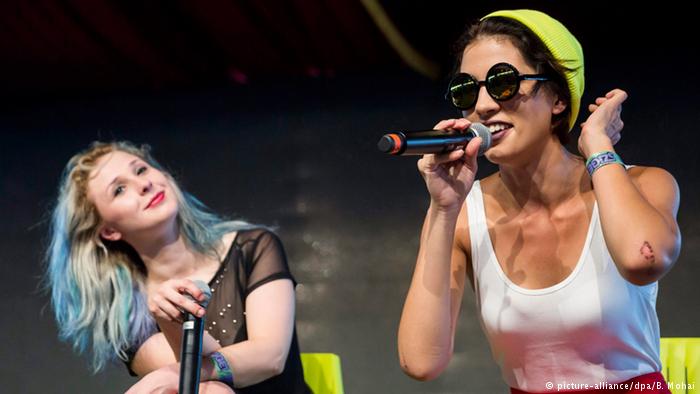
By 2015, Moscow-based Maria Alyokhina (left) and Nadya Tolokonnikova increasingly traveled Europe to continue campaigning against Russian President Vladimir Putin. Here they answer questions from the audience at the 23rd Sziget (Island) Festival on Shipyard Island in Budapest, Hungary, on August 14, 2015.
–
Part of Banksy’s world
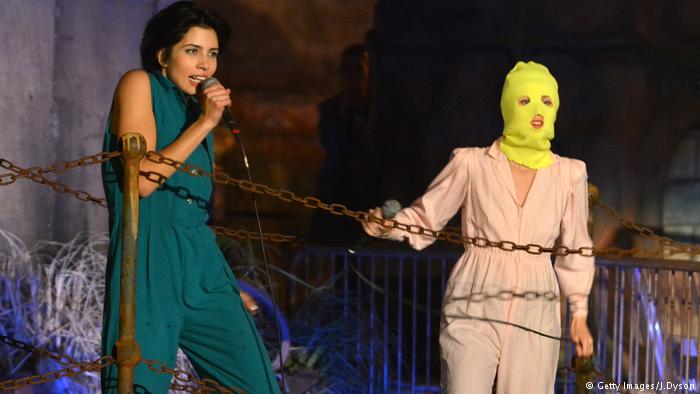
Here, in September 2015, Pussy Riot’s Nadya Tolokonnikova and Maria Alyokhina performed at the closing party of the “Dismaland” project by graffiti artist Banksy. The street artist described his subversive, pop-up exhibition at the derelict seafront Tropicana lido in the UK as a “bemusement park.”
–
How to start a revolution
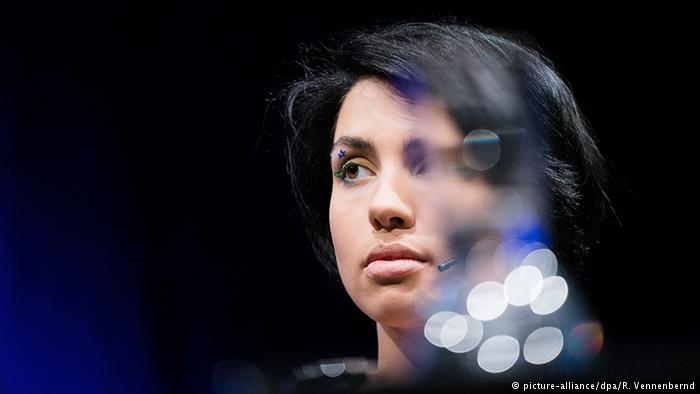
Pussy Riot co-founder Nadya Tolokonnikova wrote her own guide to individual freedom in the face of totalitarianism, “How to Start a Revolution,” which was published in 2016. She soon toured the book around the world, stopping in Berlin and at the Lit.Cologne literary festival (above).
–
Provoking the corrupt security state
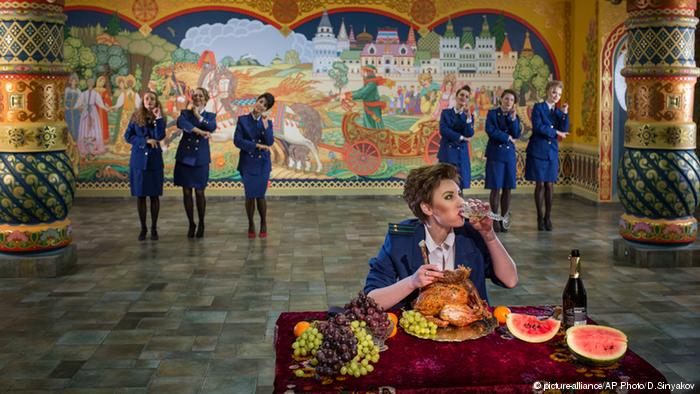
In 2016, Pussy Riot were again indulging in political provocation at home, releasing a film clip to their new protest song “Chaika” that mocks corrupt and violent Russian security agencies – under whom the jailed band members faced “endless humiliations” – after it was revealed that the country’s chief prosecutor, Yuri Chaika, had links to the local mafia.
–
Trump meets Putin

Pussy Riot’s criticism not only targets Russian authorities: At this performance in a San Francisco theater in February, a caricature of Donald Trump accompanied Vladimir Putin on stage. During the event, they discussed the current state of human rights in Russia, and how LGBT individuals and political activists in prison are affected.
–
The struggle continues
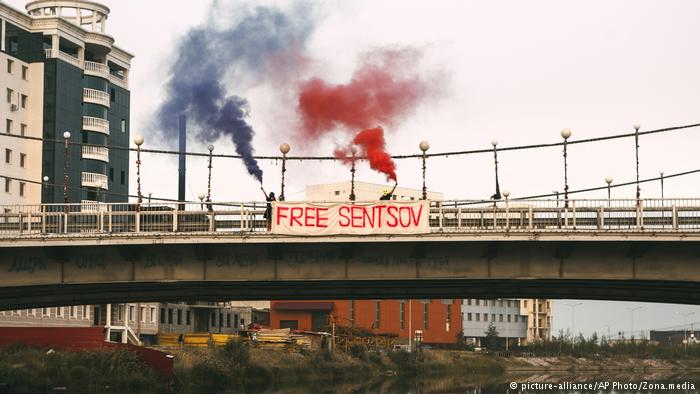
On August 6, 2017, Pussy Riot members Maria Alyokhina and Olga Borisova held flares and a banner on a bridge near a prison in Yakutsk, Russia to protest the jailing of film director Oleg Sentsov. He was arrested in Crimea – which Russia annexed from Ukraine in 2014 – and convicted by a Russian military court of conspiracy to commit terror attacks. He was sentenced to 20 years in prison.
–
Live in Germany
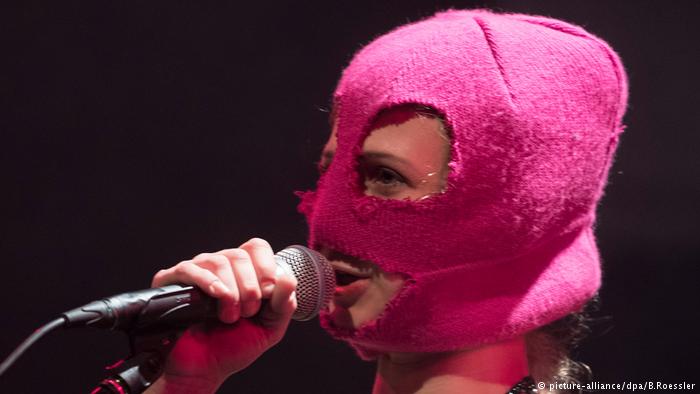
In September 2017, the group performed their “feminist punk manifesto” in Germany at Frankfurt’s Künstlerhaus Mousonturm. Titled “Riot Days,” the concert is based on band member Maria Alyokhina’s eponymous book that describes her co-founding of Pussy Riot in 2011 with Nadya Tolokonnikova and Yekaterina Samutsevich.
–
Shutting down Trump Tower
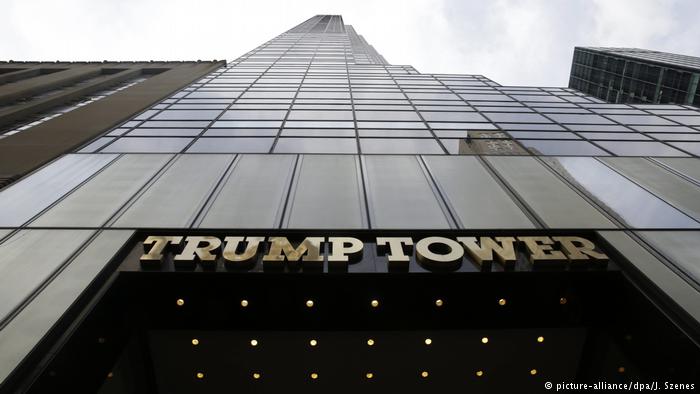
In October 2017, the group stormed Trump Tower in New York City to voice opposition to Putin and Trump and the incarceration of political prisoners. Wearing their famous balaclavas, they held up a banner once again urging the release of Ukrainian film director Oleg Sentsov. Police closed the 58-story skyscraper for a half hour.
–
Protest on the pitch

Dressed as police officers, members of the collective invaded the pitch during the World Cup final in Russia, interrupting the game. According to the group, the goals of the protest were for the Russian authorities to free all political prisoners, stop illegal arrests at public rallies and allow political competition in the country. The members were sentenced to 15 days of jail time.
Author: Stuart Braun





